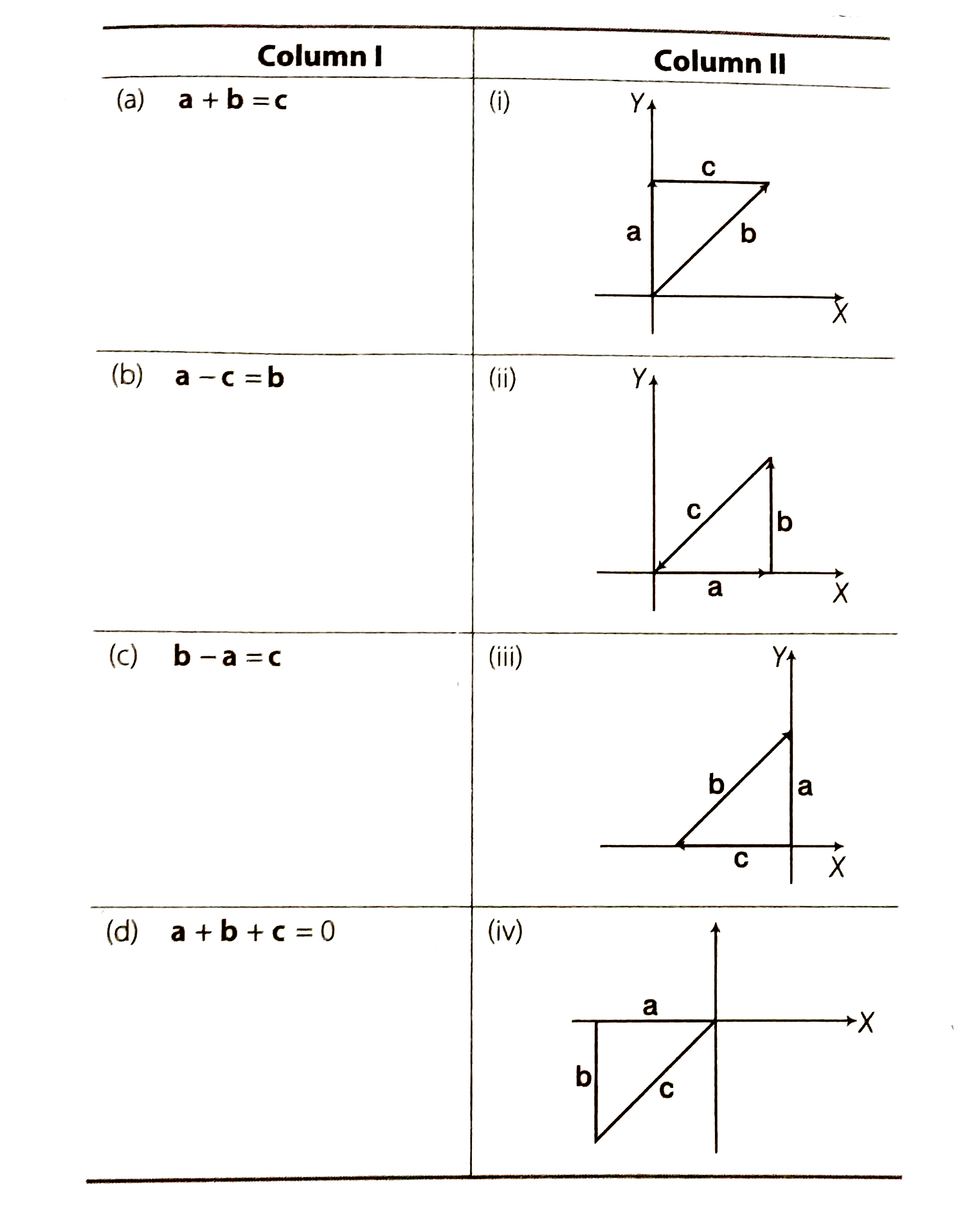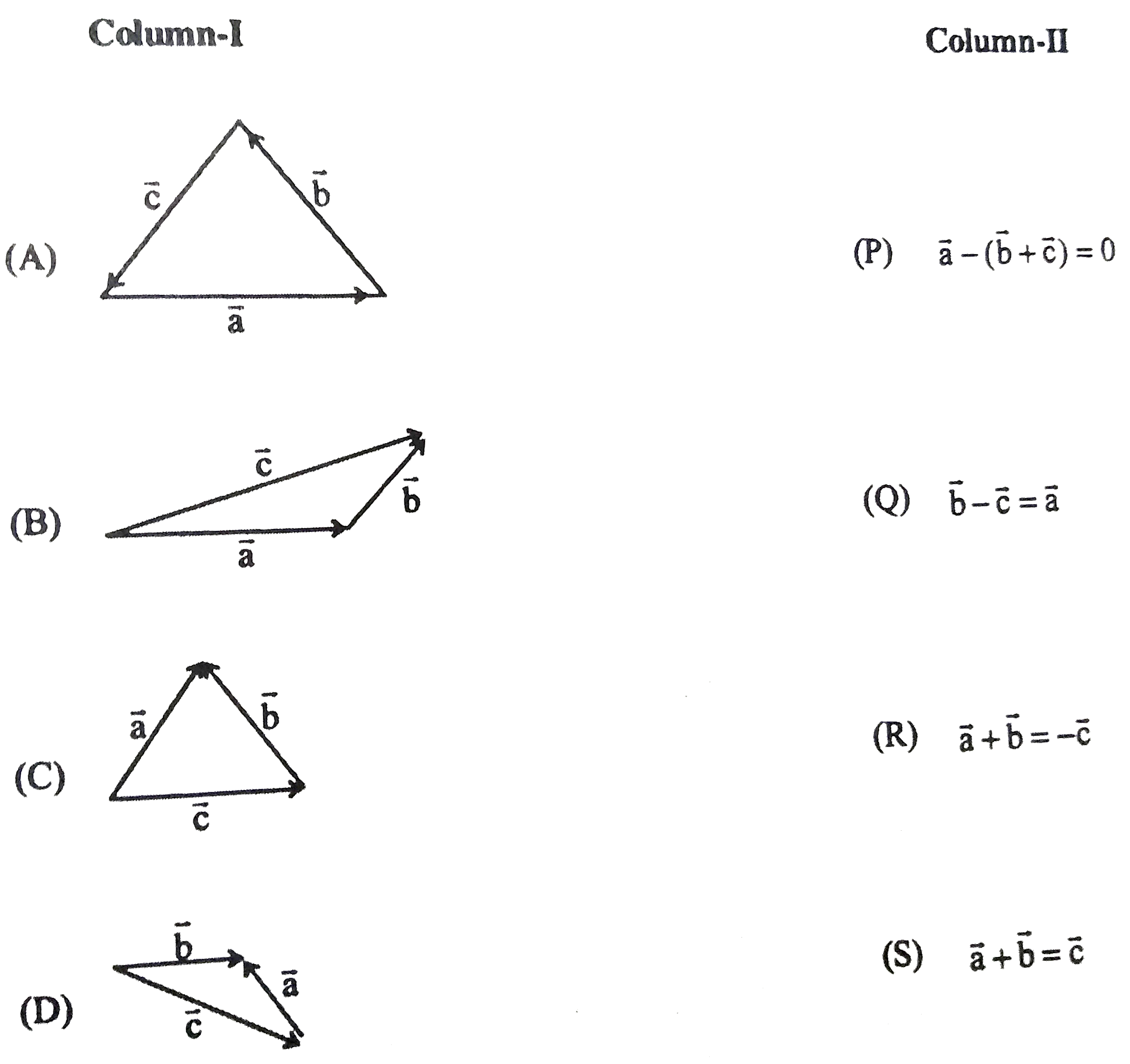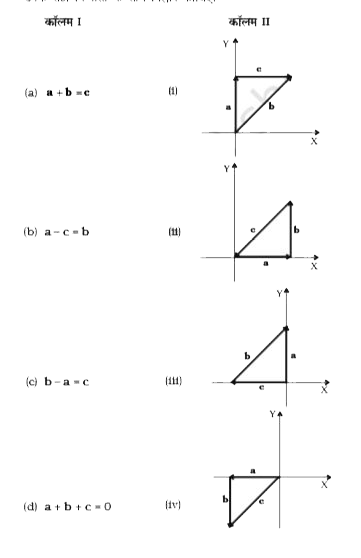Match Column-I with Column-II :
Column-IColumn-II(1) Angular momentum(a) Scalar(2) Potential energy(b) Vector(c) Unit vectorSolution in Gujrati
The correct Answer is:(1-b), (2-a)
Step by step video, text & image solution for Match Column-I with Column-II : {:("Column-I","Column-II"),("(1) Angular momentum","(a) Scalar"),("(2) Potential energy","(b) Vector"),(,"(c) Unit vector"):} by Physics experts to help you in doubts & scoring excellent marks in Class 11 exams.
Updated on:21/07/2023Topper's Solved these Questions
- OBJECTIVE QUESTIONS AS PER NEW PAPER STYLE BOOK - KUMAR PRAKASHANCHAPTER - OBJECTIVE QUESTIONS AS PER NEW PAPER STYLE EXERCISE - CHAPTER - 5 (Fill in the Blanks)
10 Videos
- OBJECTIVE QUESTIONS AS PER NEW PAPER STYLE BOOK - KUMAR PRAKASHANCHAPTER - OBJECTIVE QUESTIONS AS PER NEW PAPER STYLE EXERCISE - CHAPTER - 5 (Are the following statements True or False ?)
10 Videos
- OBJECTIVE QUESTIONS AS PER NEW PAPER STYLE BOOK - KUMAR PRAKASHANCHAPTER - OBJECTIVE QUESTIONS AS PER NEW PAPER STYLE EXERCISE - CHAPTER - 4 (Are the following statements True or False ? )
10 Videos
- MOTION IN A STRAIGHT LINE BOOK - KUMAR PRAKASHANCHAPTER - MOTION IN A STRAIGHT LINE EXERCISE - QUESTION PAPER
11 Videos
- OSCILLATIONSBOOK - KUMAR PRAKASHANCHAPTER - OSCILLATIONSEXERCISE - QUESTION PAPER (SECTION - D)
1 Videos
Similar Questions
When 10 N force act on a body, 1ms−2 acceleration is produced on it. Mass of body will be …...
View SolutionProduct of mass and momentum of body is called linear momentum.
View Solutionˆiandˆj are unit vector along x-axis and y-axis respectively.Find the resultant vector.
View SolutionDefine frame of reference and give its types.
View SolutionA cylindrical piece of cork of density of base area A and height h floats in a liquid of density pl. The cork is depressed slightly and then released. Show that the cork oscillates up and down simple harmonically with a period
T=2π√hpp1g
where p is the density of cork. (Ignore damping due to viscosity of the liquid).
View SolutionGiven below in Column I are the relations between vectors a,b and c and in Column II are the orientations of a, b and c in the XY - plane . Match the relation in Column I to correct orientations in Column II.

View SolutionMatch the quantities in Column-I with their units in Column-II:
View SolutionColumn-I show vector diagram relating three vectors →a,→b and →c. Match the vector equation in column -II, with vector diagram in column-I:

View SolutionColumn II lists some expression of force and potential energy. Match the entries in column I with the expression in column II.
View SolutionMatch Column-I with Column-II : {:("Column-I","Column-II"),("(1) Combination of two vector is maximum.",(a)180^@),("(2) Combination of two vector is minimum.",(b) 90^@),(,(c)0^@):}
View SolutionMatch Column-I with Column-II : {:("Column-I","Column-II"),("(1) Change in momentum","(a) Force"),("(2) Rate of change of momentum","(b) Impulse of force"),(,"(c) Momentum"):}
View SolutionMatch Column-I with Column-II : {:("Column-I","Column-II"),("(1) SI unit of torque",(a)m),("(2) SI unit of radius of gyration",(b) Nm),(,(C) Js^-2):}
View SolutionGiven below in Column I are the relations between vectors a,b and c and in Column II are the orientations of a, b and c in the XY - plane . Match the relation in Column I to correct orientations in Column II.
View Solutionconsidering the electron of outermost orbital of Cu match the items given the column I with their values given in column II. Column−I{(A)orbital angular momentum,(B) angular momentum in an orbit,(C) spin angular momentum} Column−II(I.4h,II.0,III.0.86h,IV.1.73)
View Solutionनीचे कॉलम I में सदिशों a, b और c के बीच संबंध दिए गए हैं तथा कॉलम II में a, b और c के XY तल में विन्यास किए गए है। कॉलम I के संबंधों का कॉलम II में दिए गए उनके सही विन्यासों के साथ मिलान कीजिए।

View Solution
